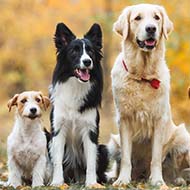Captive breeding alters wing shapes, study finds
There is a large captive breeding programme for orange-bellied parrots.
Being bred in captivity can alter the wing shape of orange-bellied parrots to such an extent that it impacts their survival chances when released into the wild, a new study has found.
Conducted by Dr Dejan Stojanovic of the Australian National University, the study examined the impact that changes in wing shape owing to captive breeding can have on the ability of orange-bellied parrots to successfully complete migratory flights.
The orange-bellied parrot, a critically endangered species, is currently part of a large captive breeding programme in Australia. Although captive breeding in conservation programmes aims to produce animals that can survive in the wild, it is known that being bred into captivity can cause unexpected phenotypic changes.
In a previous study, Dr Stojanovic had shown that captive and wild orange-bellied parrots often have different wing shapes, with captive-bred birds having a distal flight feather one millimetre longer.
In the wild, the orange-bellied parrot breeds in Tasmania and seasonally migrates to the south coast of the Australian mainland for the winter. The new study provides evidence for the first time that the change in the length of the distal flight feather has an impact on the ability of the bird to successfully migrate.
The study found that orange-bellied parrots whose wing shapes had been altered by captive breeding had a survival rate 2.7 times lower on migratory flights than birds which had the ideal ‘wild type’ typically seen in the species.
The study also examined the ubiquity of changes in wing size in other captive bred birds. Looking at sixteen species, Dr Stonjanovic found that four other species showed evidence of altered wing shapes: budgerigars, Gouldian finches, turquoise parrots and sundown parrots. This suggests that changes in wing shape may be a relatively common response to captivity, although the types of changes varied between species.
Dr Stojanovic said: “This is likely only the tip of an iceberg of subtle physical changes to the bodies of captive bred animals that, although easily overlooked, have a big impact after release.
“We should be aware of this and find ways to mitigate the effects of captivity if we want to give our breeding programs the best chance of supporting wild populations.”
The study has been published in Ecology Letters.



 A free webinar exploring the development of the Kennel Club's registration system and the evolution of closed breed registers has been announced.
A free webinar exploring the development of the Kennel Club's registration system and the evolution of closed breed registers has been announced.